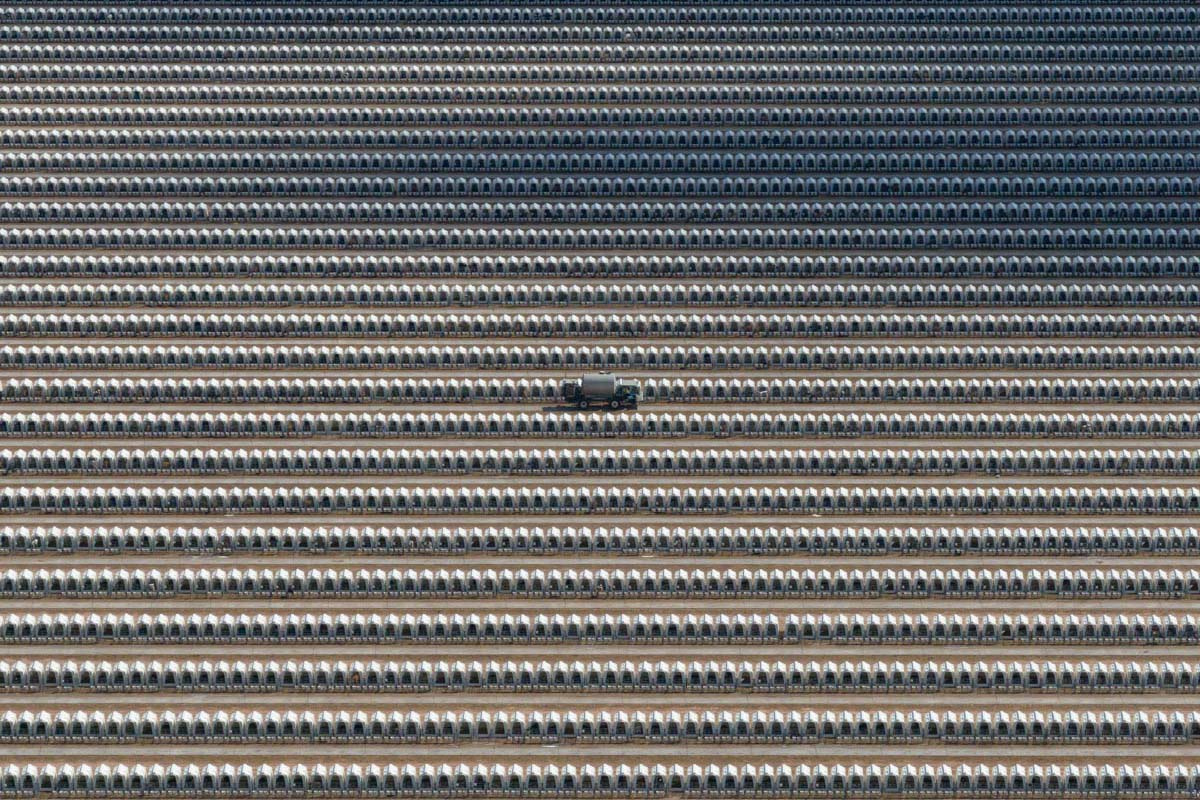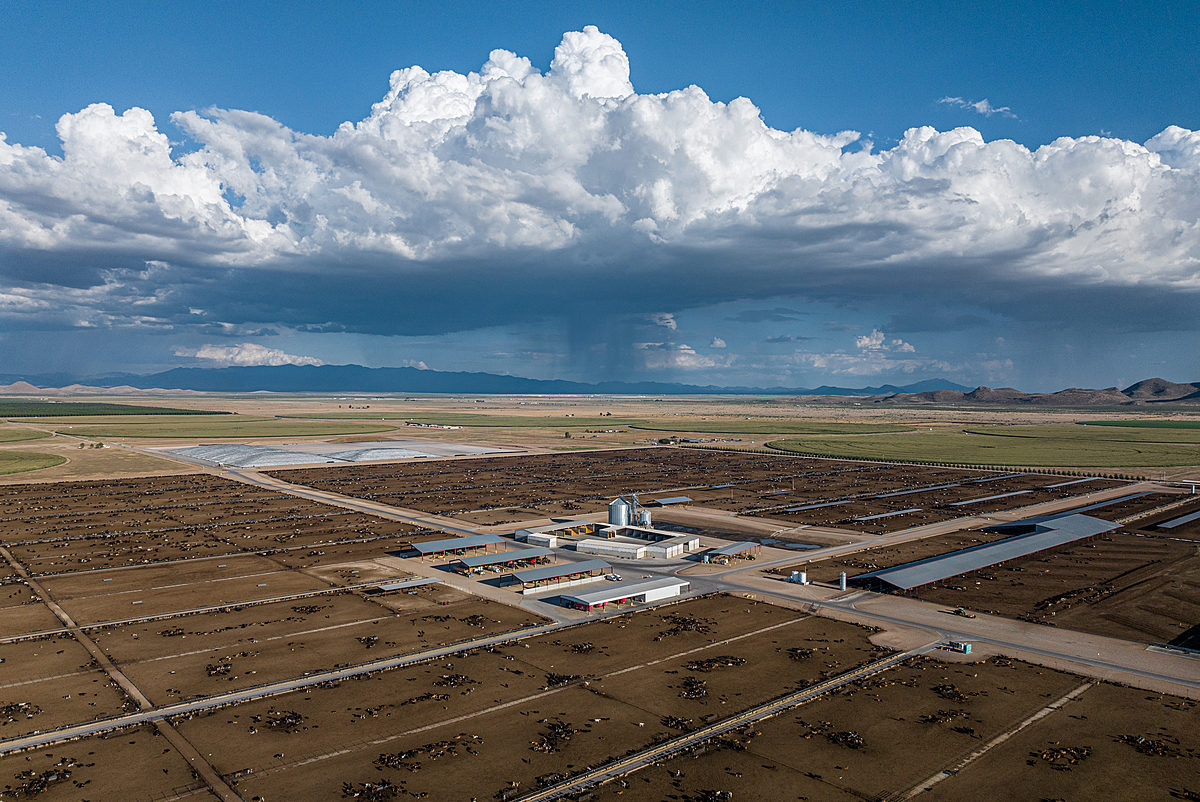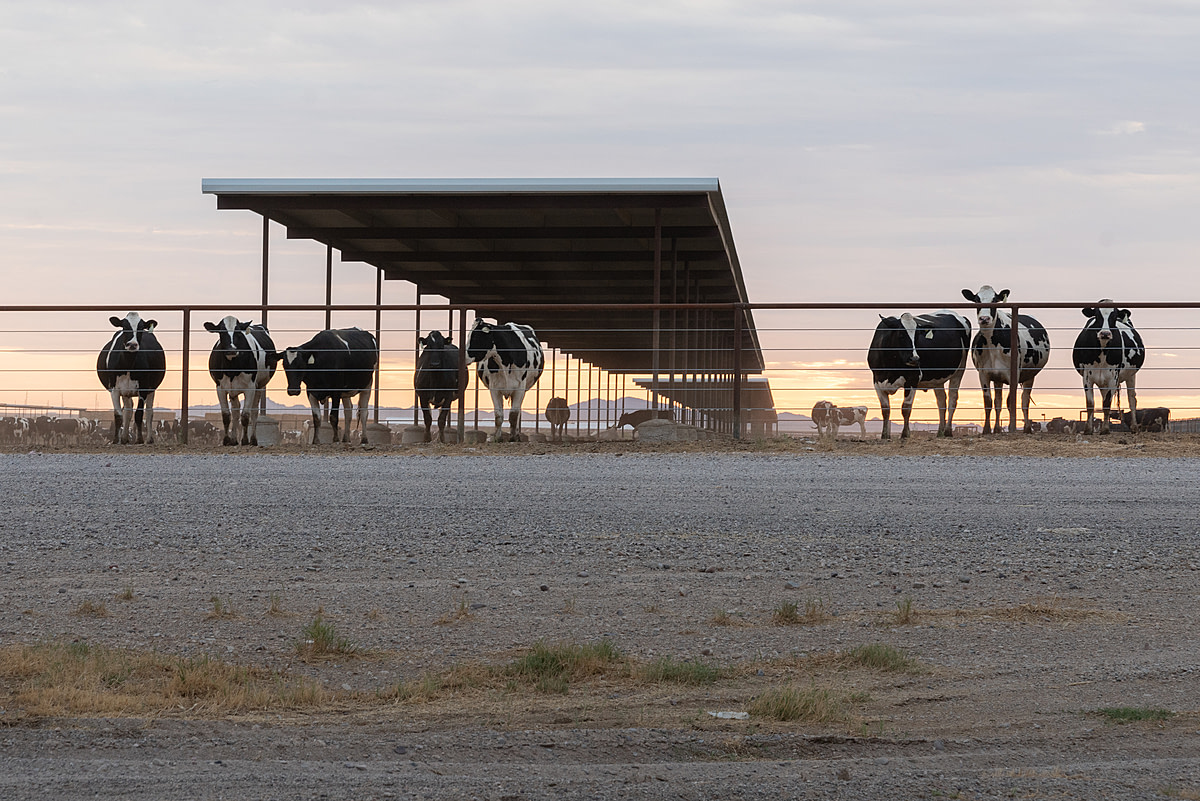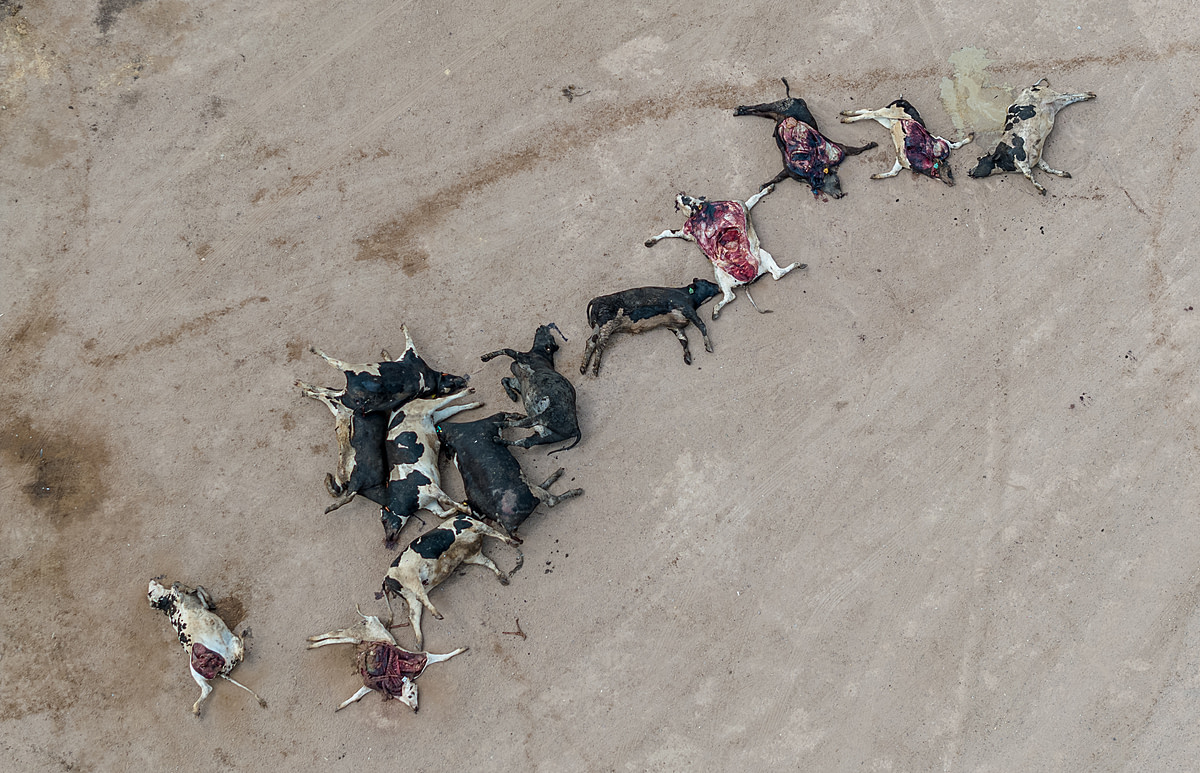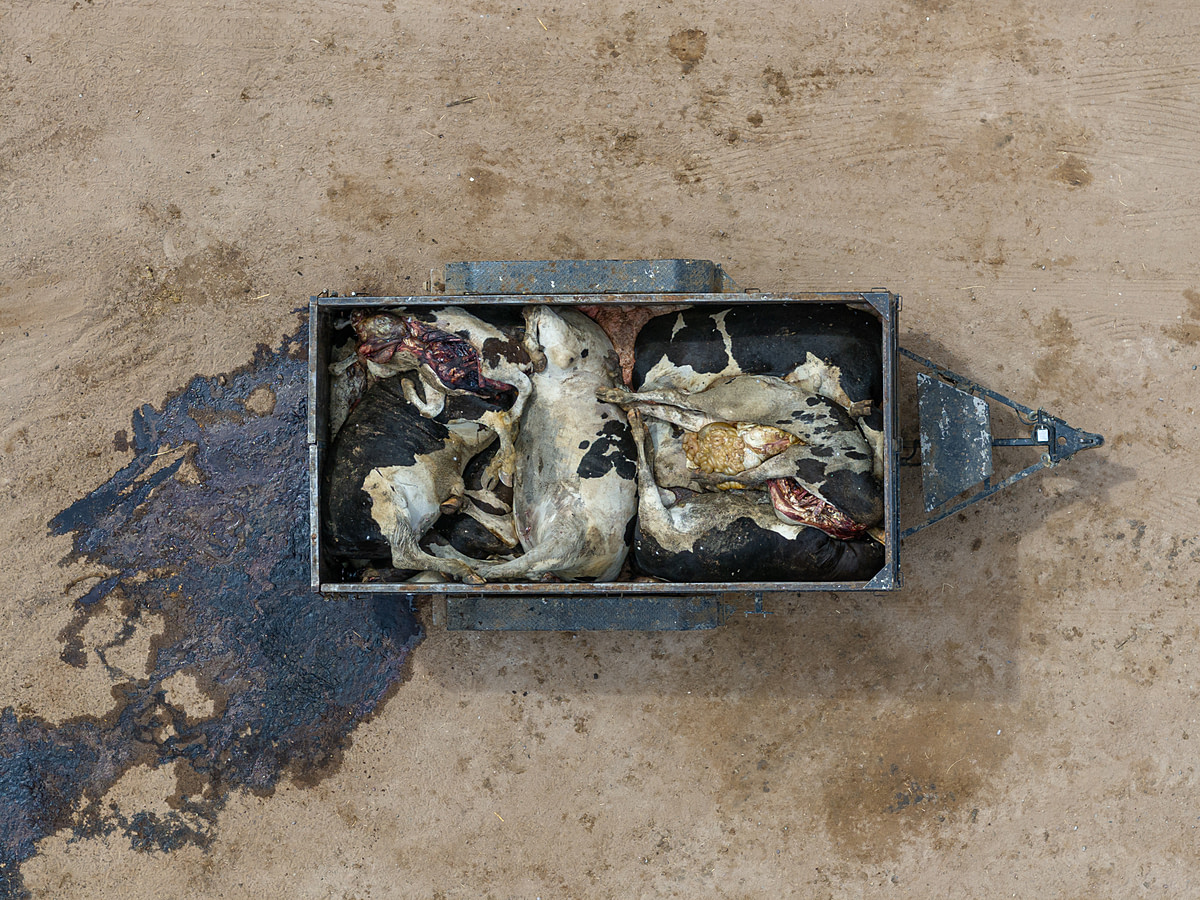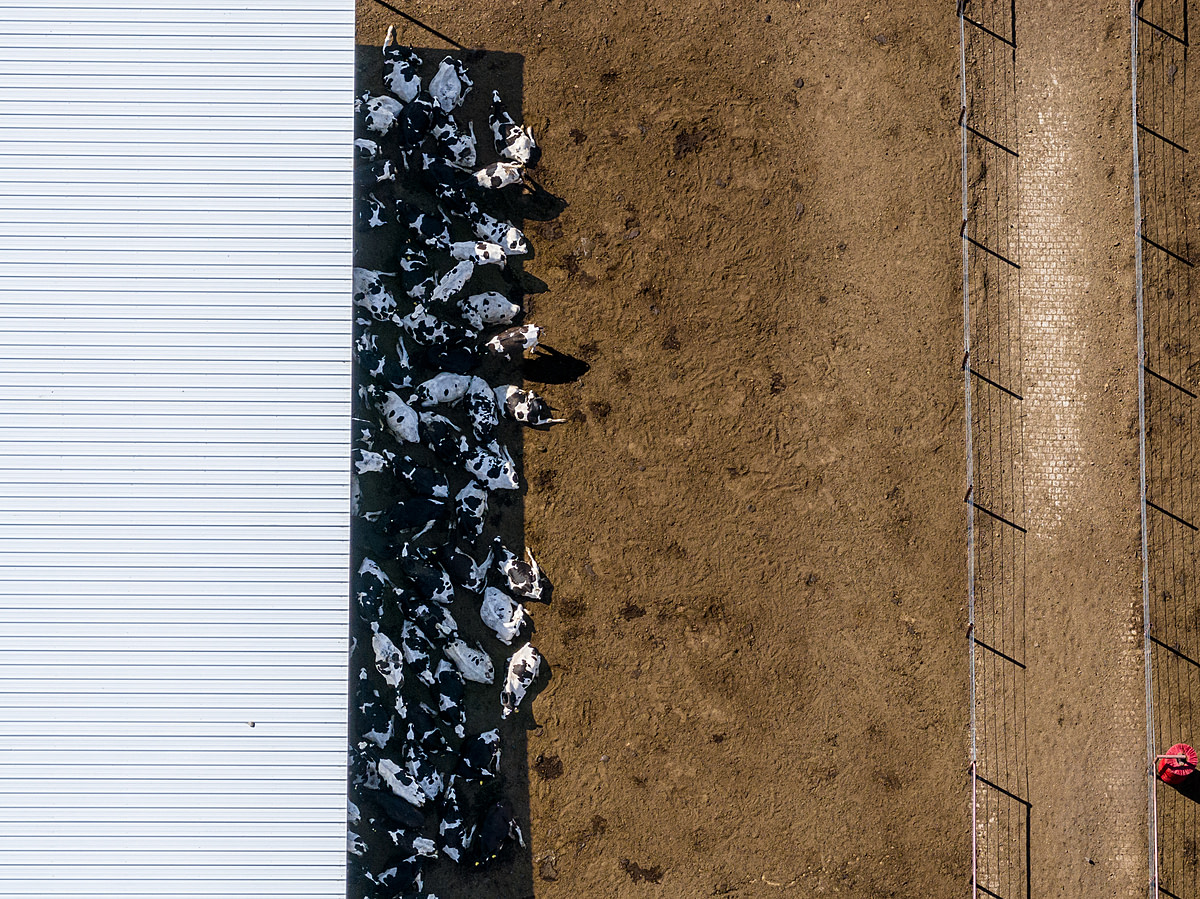Ram Daya / We Animals
[Content warning: Contains confronting images and/or video footage]
Although mostly desert, the drought-stricken state of Arizona has a long history of agriculture, including alfalfa grown for domestic and international dairy markets. The state’s lack of water regulations has long attracted agricultural corporations from Minnesota to as far away as the Middle East. In the late summer of 2023, We Animals photojournalist Ram Daya visited several industrial farms in Arizona to document the scale of the state’s expanding animal agriculture industry.
Ram Daya / We Animals
These corporate farms use land and groundwater to raise cattle and grow alfalfa and forage feed for cattle both locally and farther afield. Residents complain that these “mega-dairies” are drying up wells and aquifers and causing water scarcity in a state that is already experiencing a groundwater crisis.
Ram Daya / We Animals
Ram Daya / We Animals
Turkey Creek Dairy, owned by Riverview, LLP is one of the state’s most extensive dairy operations, with cattle yards able to accommodate up to 130,000 heifers and dairy cows, and 17,000 white plastic hutches for calves. Riverview began as a Midwestern family farm, eventually expanding into an investor-funded corporation. The corporation’s water use has come under scrutiny for reputedly accelerating the aquifer’s depletion, having drilled more than 80 wells in the Willcox Basin aquifer, several more than 300 metres (1,000 feet) deep.
Ram Daya / We Animals
Ram Daya / We Animals
Ram Daya / We Animals
As an industry that exploits a staggering number of sentient beings for investor profits, the problems with dairy farming extend beyond its use of scarce water resources.
Ram Daya / We Animals
Ram Daya / We Animals
Ram Daya / We Animals
Ram Daya / We Animals

